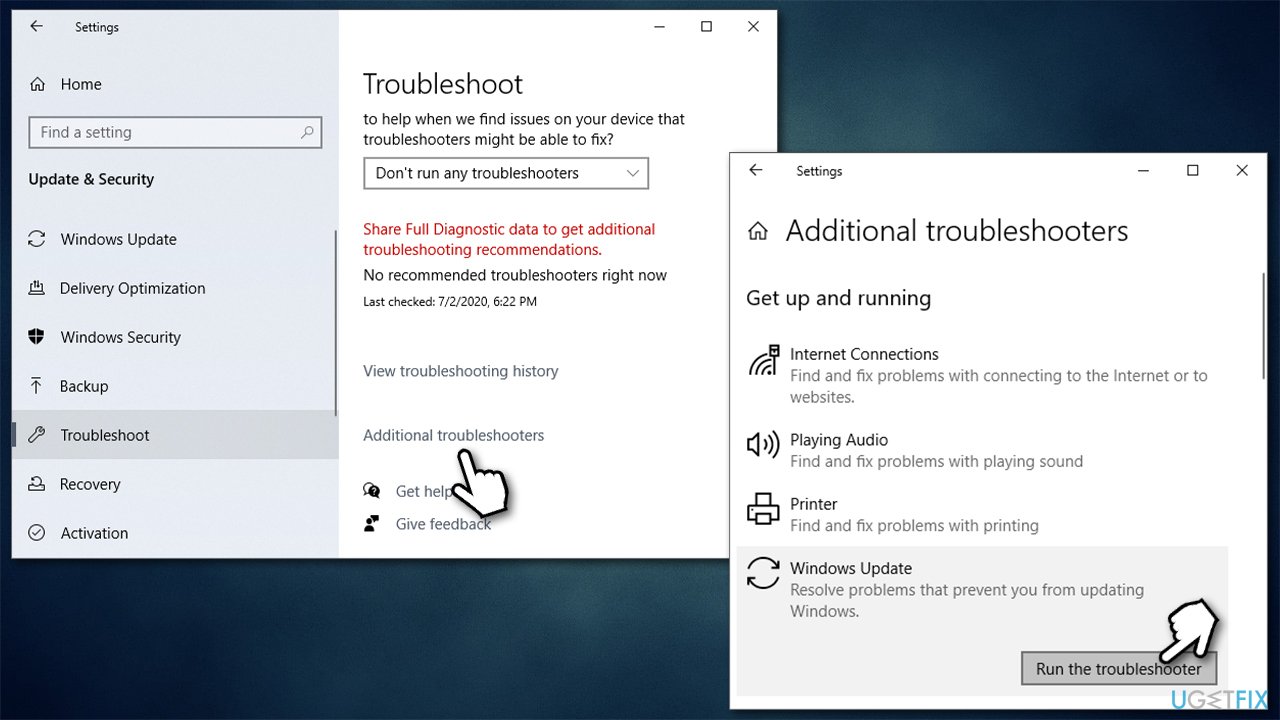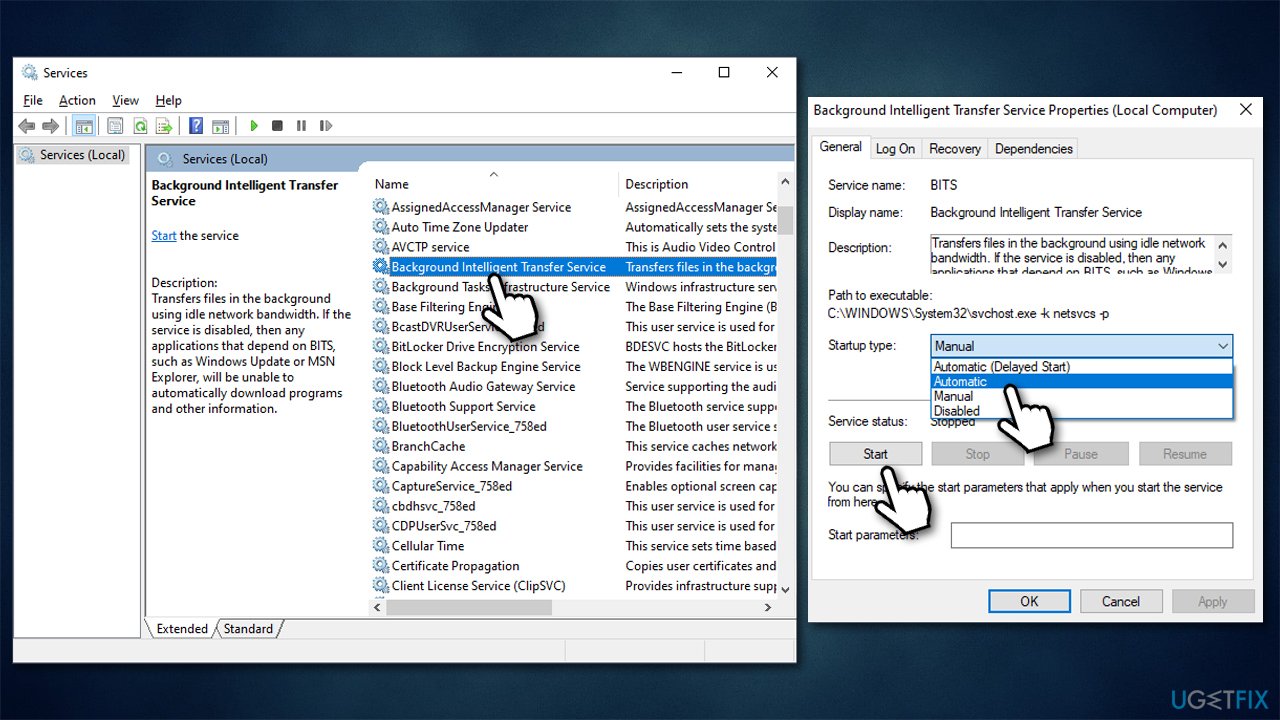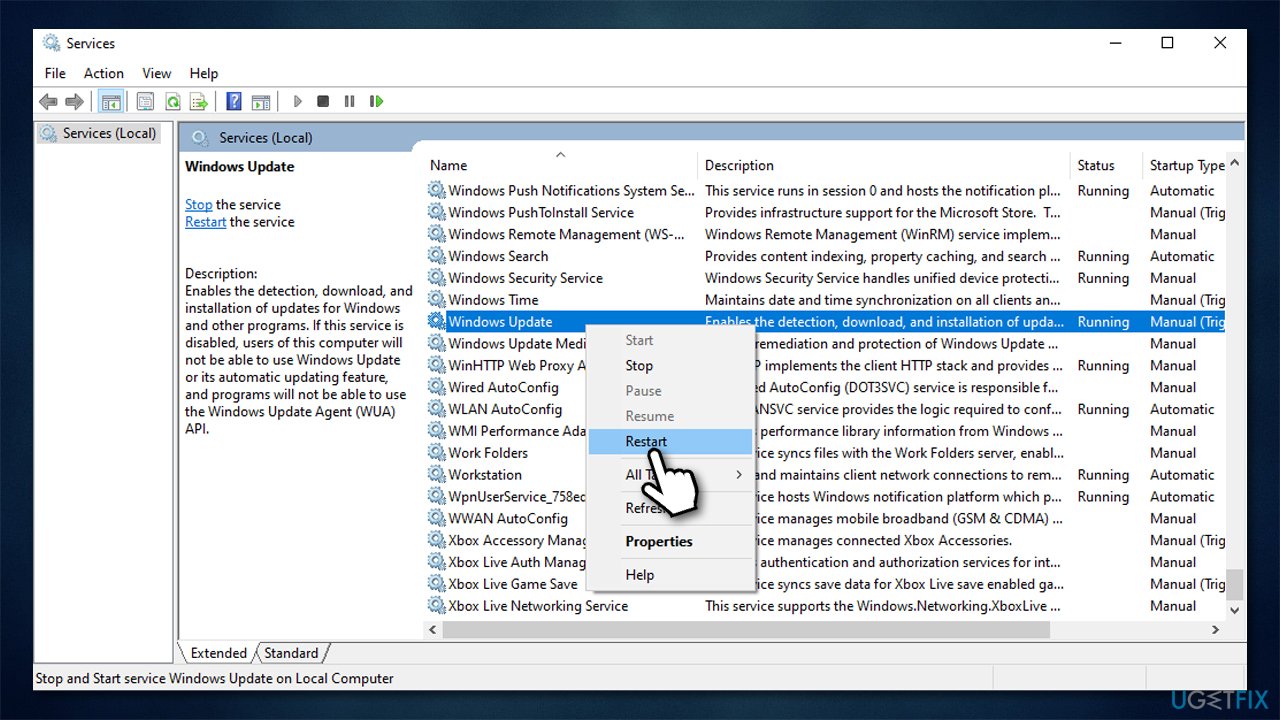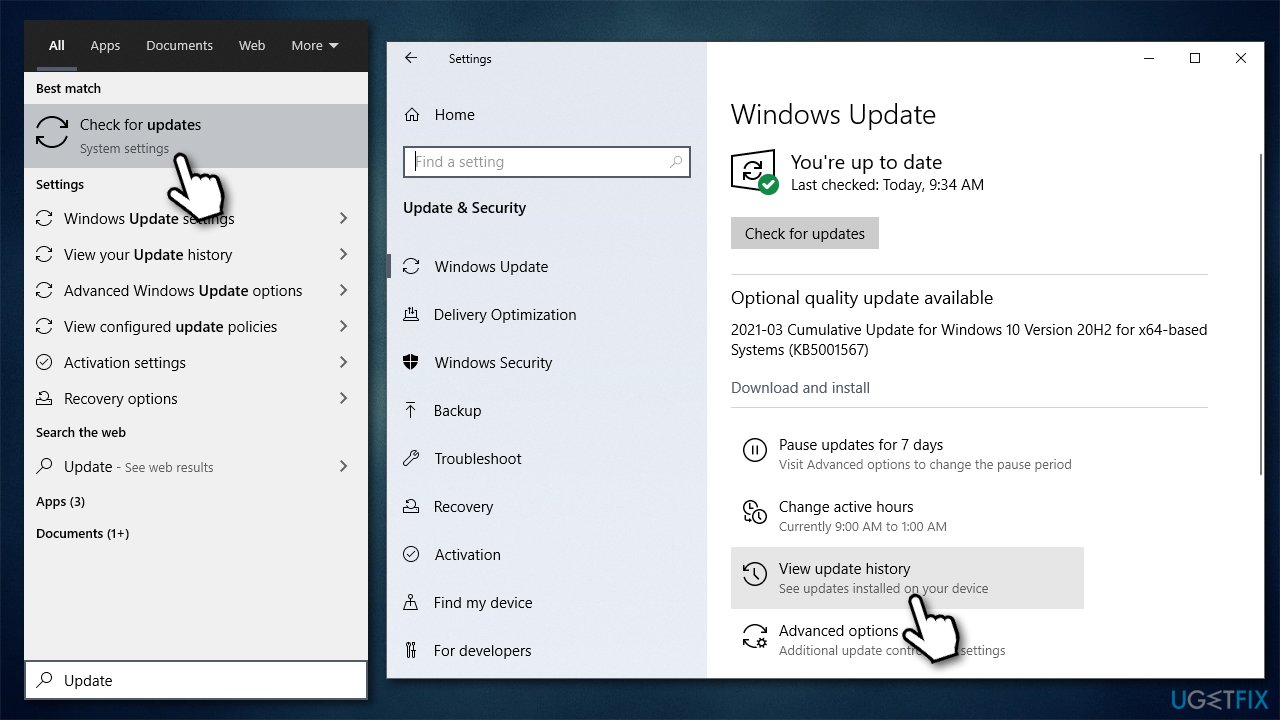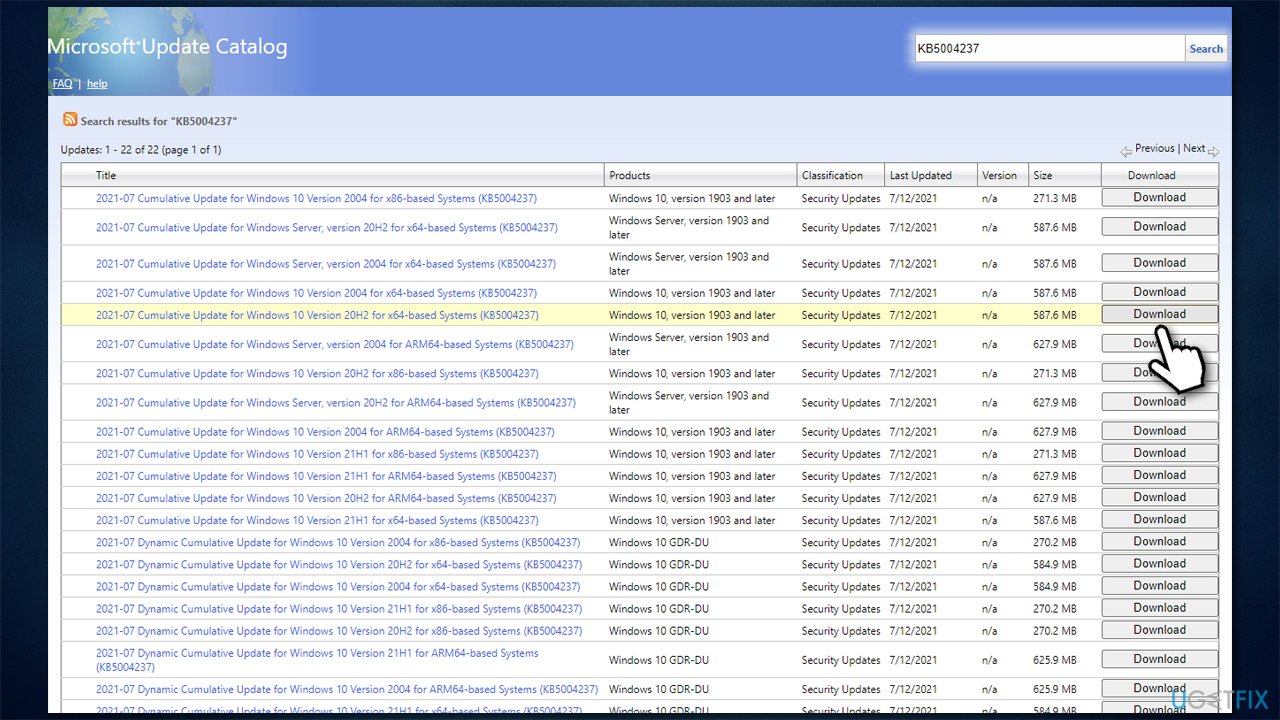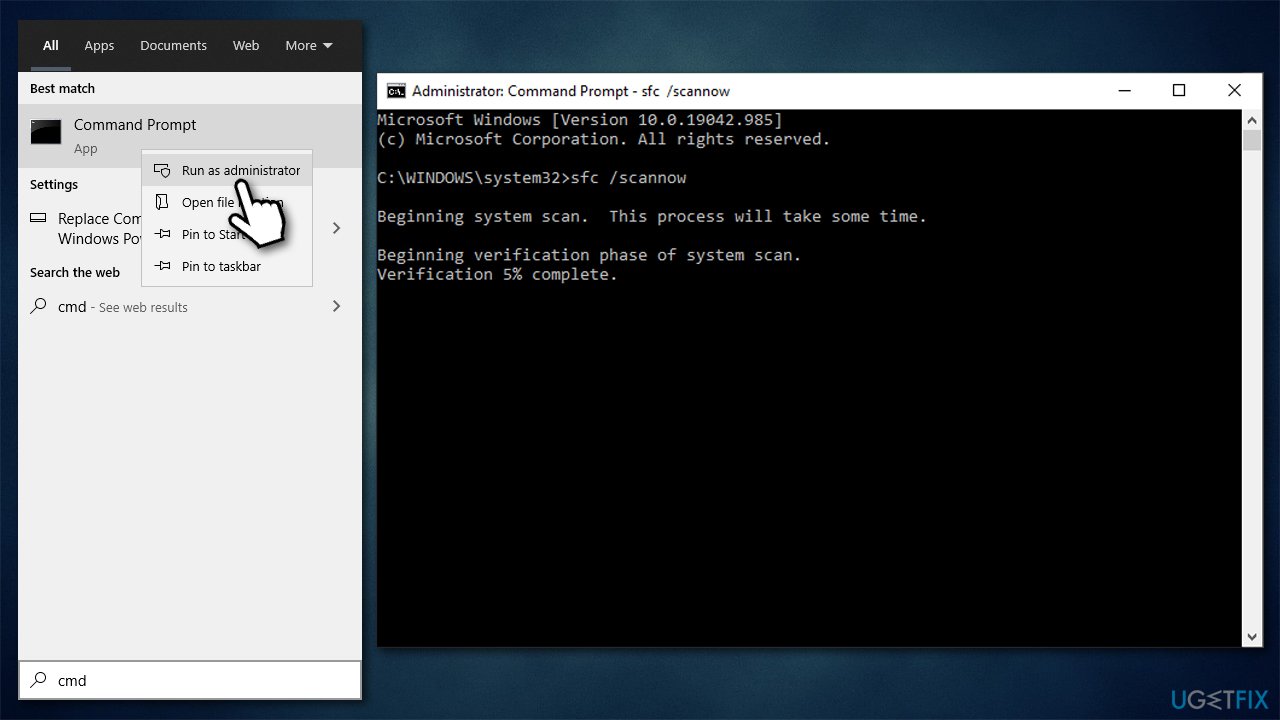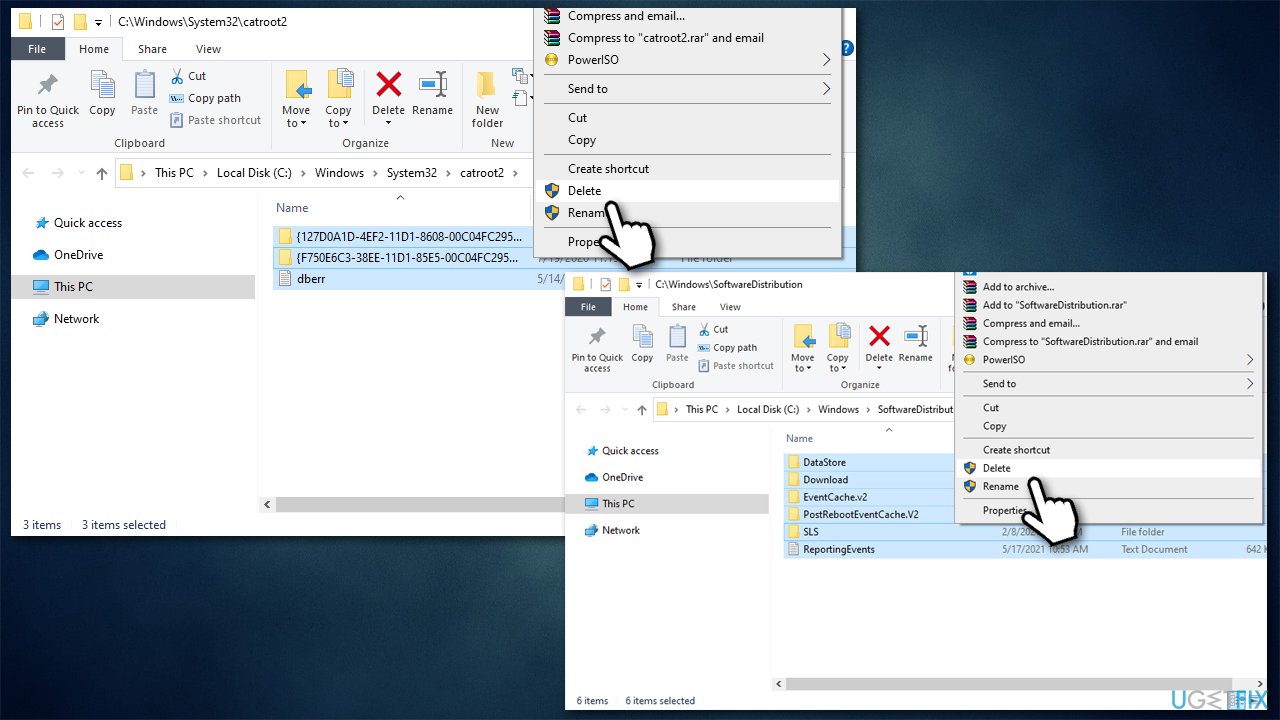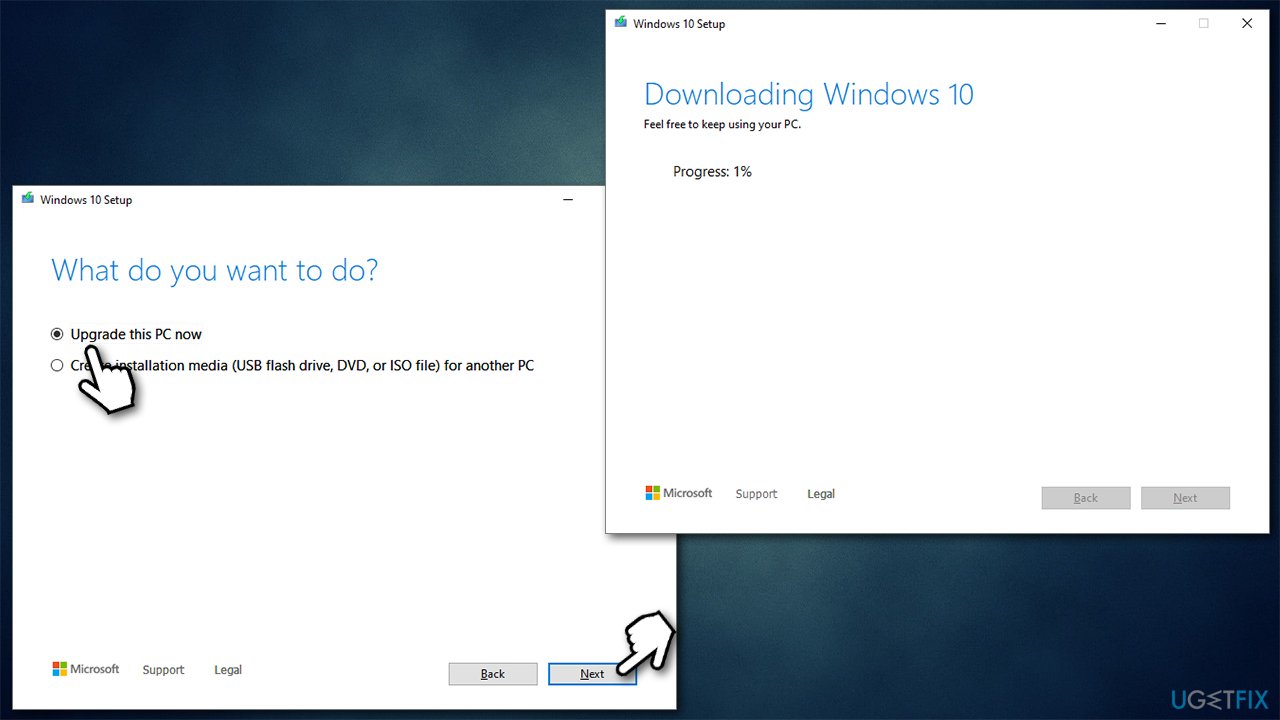Question
Issue: How to fix Windows update error 0x8007371c?
Hi. Every time I try to update Windows, I receive an error 0x8007371c. I tried rebooting and also waited for almost a week now but to no avail. I would be grateful if any solution for this could be provided.
Solved Answer
Windows is a very powerful, customizable, and the most popular operating system in the world. Not only home users but also businesses rely on various OS versions to perform daily tasks. A disrupted update process can cause serious issues to both regular users and those working at the corporations.
Unfortunately, Windows update errors are relatively common, and most users who used Windows 10 for a prolonged time would have experienced it at least once. This time, we are talking about an error 0x8007371c and will explore the solutions that should help you fix the issue once and for all.
The error typically occurs when an automatic or manual system update (typically, cumulative)[1] is initiated, and it reads the following:
Updates failed
There were problems installing some updates, but we'll try again later.
[Date] Cumulative Update for Windows 10 Version XX for x64-based Systems (KBXXXXXXX) – Error 0x8007371c
The message is rather generic, and we saw similar error codes using it as well before, including 0x800f0986, 0x800f0990, or 0x800f0984. In any case, it does not explain why the error occurs or what users should do in order to fix it.
To start the troubleshooting, we should first get to the root cause of the situation. For some people, Windows update errors might go away just by simply waiting for a few days – this usually happens when there are problems with Microsoft's servers or when the user's internet connection is unstable.
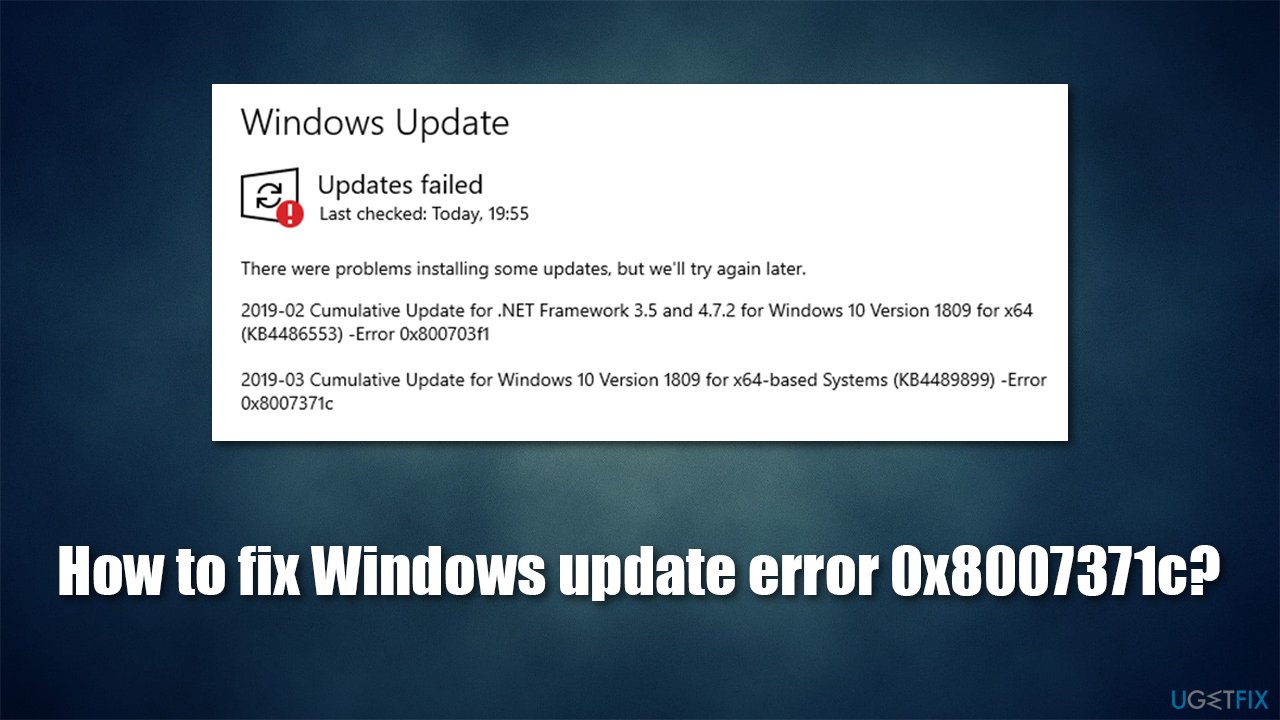
However, most people claimed that waiting did not do anything, and they still couldn't update their system. This is because there could be several underlying issues causing it. They include:
- Issues with correlating Windows services
- Damaged Windows update components
- Corrupted system files
- Third-party software, especially antivirus software.
Protip: if you want to avoid tedious troubleshooting steps, you can try using an automatic PC repair tool FortectMac Washing Machine X9. It can find the underlying problems on a PC and replaces the damaged system components within just a few minutes, fixing BSODs,[2] registry issues, and errors automatically. Besides, the app can also be used as a maintenance utility for cleaning various caches[3] and freeing up space, which would also increase the device's speed.
1. Temporarily uninstall your security software
It is not a secret that some third-party security programs might have compatibility issues with Windows OS. There should be no two antivirus programs running unless one of them is a complementary application that does not interfere with another's work.
Nonetheless, it is known that some security apps can be overly aggressive when it comes to data packets downloaded from the internet. To be precise, some anti-malware might start blocking certain connections to Microsoft servers. Thus, when dealing with Windows update errors, it is recommended to temporarily uninstall third-party security software.
Alternatively, you could also access your anti-malware app's settings and add all Microsoft servers to the list of exceptions:
- http://windowsupdate.microsoft.com
- http://*.windowsupdate.microsoft.com
- https://*.windowsupdate.microsoft.com
- http://*.update.microsoft.com
- https://*.update.microsoft.com
- http://*.windowsupdate.com
- http://download.windowsupdate.com
- https://download.microsoft.com
- http://*.download.windowsupdate.com
- http://wustat.windows.com
- http://ntservicepack.microsoft.com
- http://go.microsoft.com
2. Run Windows update troubleshooter
- Type Troubleshoot in Windows search
- Select Additional troubleshooters
- Find Windows Update from the list
- Click it and select Run the troubleshooter

- Apply the suggested fixes and restart your PC.
3. (Re)start relevant services
You should ensure that BITS and Windows Update services are running. If they are already running, you should restart them.
- Type in Services in Windows search and press Enter
- Locate Background Intelligent Transfer Service (BITS)
- If it is already running, right-click and select Restart
- if the service is not running, double-click it, select Automatic under the Startup type from the drop-down menu
- Click Start, Apply and OK

- Do the same with Windows Update service
- If these services are already running, right-click and pick Restart.

4. Install the update manually
You can try downloading and installing the missing update manually. Here's how:
- In Windows search, type in Update and press Enter
- Click View Update History

- Find the error code and check the KB number next to it – write it down or copy it
- Open your browser and go to Microsoft Update Catalog
- Within the search bar, use the KB number that failed to install with the 0x8007371c error
- Find the correct version of the update for your operating system (to check this, right-click on Start and pick System. Under Device specifications and check the System type) and click Download

- Proceed with on-screen instructions and restart your PC once done.
5. Run SFC and DISM scans
To ensure that no Windows system files are corrupted, run commands in the elevated Command Prompt.
- Type cmd in Windows search
- Right-click on Command Prompt result and select Run as administrator
- Paste the following command into the new window:
sfc /scannow
- Press Enter and wait till the scan is finished
- If the scan fixed corrupted files, restart and try updating again. If nothing was found or it returned an error, proceed with the following commands:
DISM /Online /Cleanup-Image /CheckHealth
DISM /Online /Cleanup-Image /ScanHealth
DISM /Online /Cleanup-Image /RestoreHealth - Restart your PC.
6. Reset Windows update components
If Windows update components were corrupted in some way, removing catches should resolve the problem.
- Access Command Prompt as administrator (explained above)
- Use the following commands, pressing Enter each time:
net stop wuauserv
net stop cryptSvc
net stop bits
net stop msiserver - Press Win + E to open File Explorer (make sure Hidden Files are visible)
- Go to the following locations and delete the contents of these folders:
C:\\Windows\\System32\\catroot2
C:\\Windows\\SoftwareDistribution
- Go back to Command Prompt and use these lines:
net start wuauserv
net start cryptSvc
net start bits
net start msiserver - Restart your PC.
7. Use Media Creation Tool
If the above methods did not help, you could employ Media Creation Tool to perform an in-place upgrade. Before proceeding, we recommend you backup your personal files and disconnect all external devices except the mouse and keyboard.
- Go to the official Microsoft website and download Media Creation Tool
- Double-click the installer, agree to terms and click Next
- Select Upgrade this PC now > Next

- At this point, wait till Windows downloads and installs the necessary files
- Your system might restart several times.
Repair your Errors automatically
ugetfix.com team is trying to do its best to help users find the best solutions for eliminating their errors. If you don't want to struggle with manual repair techniques, please use the automatic software. All recommended products have been tested and approved by our professionals. Tools that you can use to fix your error are listed bellow:
Prevent websites, ISP, and other parties from tracking you
To stay completely anonymous and prevent the ISP and the government from spying on you, you should employ Private Internet Access VPN. It will allow you to connect to the internet while being completely anonymous by encrypting all information, prevent trackers, ads, as well as malicious content. Most importantly, you will stop the illegal surveillance activities that NSA and other governmental institutions are performing behind your back.
Recover your lost files quickly
Unforeseen circumstances can happen at any time while using the computer: it can turn off due to a power cut, a Blue Screen of Death (BSoD) can occur, or random Windows updates can the machine when you went away for a few minutes. As a result, your schoolwork, important documents, and other data might be lost. To recover lost files, you can use Data Recovery Pro – it searches through copies of files that are still available on your hard drive and retrieves them quickly.
- ^ Preston Gralla. Windows 10: A guide to the updates. Computerworld. IT news, careers, business technology, reviews.
- ^ Blue screen of death. Wikipedia. The free encyclopedia.
- ^ Dave Johnson. What is a cache? A complete guide to caches and their important uses on your computer, phone, and other devices. Business Insider. Financial and business news website.
